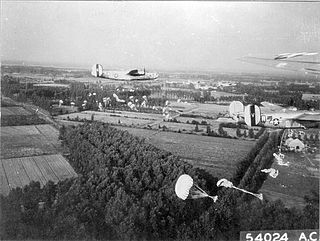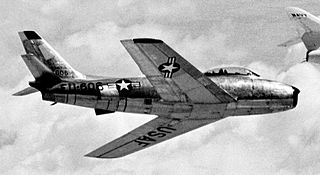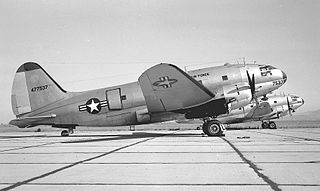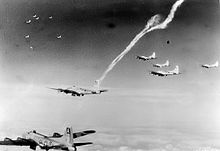
The 337th Test and Evaluation Squadron is a squadron of the United States Air Force. It is a part of the 53d Test and Evaluation Group of the 53d Wing. The 337th is stationed at Dyess Air Force Base, Texas, though it operates out of a number of bases throughout the United States.

The 700th Airlift Squadron is part of the 94th Airlift Wing at Dobbins Air Reserve Base, Georgia. It operates Lockheed C-130 Hercules aircraft providing global airlift.

The 731st Airlift Squadron is a flying unit of the United States Air Force assigned to the Air Force Reserve Command and part of the 302d Airlift Wing at Peterson Air Force Base, Colorado. It operates Lockheed C-130H Hercules aircraft providing global airlift. The squadron also has the specialized mission of Modular Airborne Fire Fighting System.

The 732nd Airlift Squadron, officially 732d Airlift Squadron, is a unit of the United States Air Force. It is part of the 514th Air Mobility Wing at McGuire AFB, New Jersey. It operates McDonnell Douglas C-17 Globemaster III aircraft in providing global strategic airlift to US and allied forces.

The 349th Air Refueling Squadron is a unit of the US Air Force, part of the 22d Air Refueling Wing at McConnell Air Force Base, Kansas. It operates the Boeing KC-135 Stratotanker aircraft conducting aerial refueling missions.

The 413th Flight Test Squadron is part of the 96th Test Wing and is based at Hurlburt Field, Florida. It performs flight testing on aircraft used by special operations forces, the Lockheed C-130 Hercules, Bell Boeing CV-22 Osprey, Sikorsky MH-53 Pave Low, Bell UH-1 Huey, and Sikorsky HH-60 Pave Hawk aircraft.

The 531st Bombardment Squadron was a unit of the US Air Force, first activated during World War II. After training as a heavy bomber unit in the United States, it moved to the Southwest Pacific Theater, entering combat in May 1943, flying combat missions from Australia while attached to the Royal Australian Air Force, earning two Distinguished Unit Citations and a Philippine Presidential Unit Citation. In 1945 it moved forward to the Philippines, then to Okinawa. Following V-J Day, the squadron returned to the Philippines and was inactivated there in February 1946.

The 482d Operations Group is a United States Air Force Reserve unit assigned to the 482d Fighter Wing. It is stationed at Homestead Air Reserve Base, Florida.

The 448th Supply Chain Management Group is an inactive United States Air Force unit. Its last assignment was to the 448th Supply Chain Management Wing at Tinker Air Force Base, Texas, where it was inactivated on 30 June 2010.

The 94th Operations Group is the flying component of the 94th Airlift Wing, assigned to the United States Air Force Reserve. The group is stationed at Dobbins Air Reserve Base, Georgia.

The 506th Bombardment Squadron is an inactive United States Air Force unit. It was last assigned to the 44th Bombardment Wing at Chennault Air Force Base, Louisiana, where it was inactivated on 15 June 1960.

The 339th Bombardment Squadron is an inactive United States Air Force unit. It was last assigned to the 96th Bombardment Wing at Dyess Air Force Base, Texas, where it was inactivated on 15 March 1963.

The 812th Fighter-Bomber Squadron is an inactive United States Air Force unit. Its last assignment was with 482d Fighter-Bomber Group stationed at Dobbins Air Force Base, Georgia.

The 813th Fighter-Bomber Squadron is an inactive United States Air Force unit. Its last assignment was with 482d Fighter-Bomber Group at Dobbins Air Force Base, Georgia.

The 814th Troop Carrier Squadron is an inactive United States Air Force unit. Its last assignment was with 482d Troop Carrier Group stationed at Miami International Airport, Florida.

The 713th Fighter-Bomber Squadron is an inactive United States Air Force unit. It was last assigned to the 448th Fighter-Bomber Group at Davis Field, Oklahoma, where it had been stationed since November 1955. It was inactivated on 16 November 1957.

The 511th Bombardment Squadron is an inactive United States Air Force unit. It was last assigned to the 351st Bombardment Group at Fairfax Field, Kansas, where it was inactivated on 27 June 1949.

The 338th Combat Crew Training Squadron is a currently inactive United States Air Force unit. It was last assigned to the 96th Operations Group at Dyess Air Force Base, Texas, where it was inactivated on October 1, 1993.

The 733rd Military Airlift Squadron is an inactive United States Air Force unit. It was activated as the 333rd Bombardment Squadron during World War II. After training in the United States, it deployed to the European Theater of Operations, where it participated in the strategic bombing campaign against Germany, earning a Distinguished Unit Citation. It was inactivated in England following V-E Day.

The 323d Expeditionary Operations Group is a provisional United States Air Force unit assigned to the United States Air Forces in Europe. As a provisional unit, it may be activated or inactivated at any time.
























